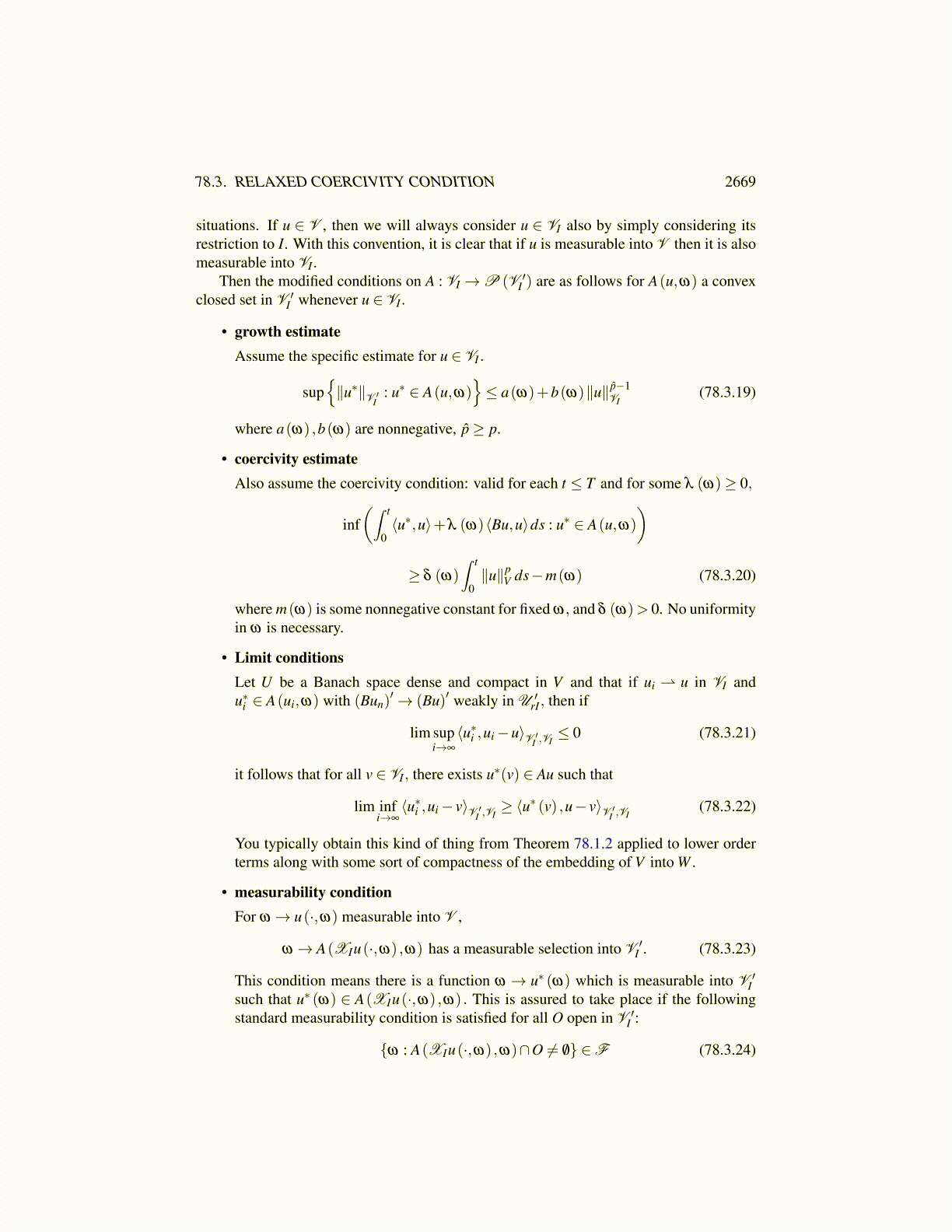
78.2. MEASURABLE SOLUTIONS TO EVOLUTION INCLUSIONS 2669
Corollary 78.2.3 Let A satisfy 78.1.1-78.1.1, p> 1, and let f be measurable into V ′. Thenthere exists a solution to
Lu(ω)+w∗ (ω) = f (ω) ,Bu(0,ω) = Bu(T,ω) ,
w∗ (ω) ∈ A(u(ω) ,ω)
such that Lu,w∗,u are all measurable.
Proof: Define Λ as the restriction of L to the space {u ∈ D(L) : Bu(0) = Bu(T )} . Thisenables periodic conditions. Let
D(T )≡{
v ∈ V : v′ ∈ V and v(T ) = v(0)}, T v =−Bv′
Then consider T ∗. If u ∈ D(Λ) ,v ∈ D(T ) ,
−∫ T
0
⟨Bv′,u
⟩=−⟨Bu,v⟩ |T0 +
∫ T
0
⟨(Bu)′ ,v
⟩and so, since the boundary term vanishes, this shows that D(Λ)⊆ D(T ∗) and that T ∗ = Λ
on D(Λ).Next let u ∈ D(T ∗) . By definition, this means that
|⟨T v,u⟩| ≤Cu ∥v∥V (*)
So let v ∈C∞c ([0,T ] ;V ) .
⟨T v,u⟩=−∫ T
0
⟨Bv′,u
⟩=−
∫ T
0
⟨Bu,v′
⟩From the Riesz representation theorem, there exists a unique (Bu)′ such that the aboveequals
∫ T0⟨(Bu)′ ,v
⟩and by density of C∞
c ([0,T ] ;V ) this shows T ∗u = (Bu)′ = Lu. ThusT ∗ = L on D(T ∗) and in particular (Bu)′ ∈ V ′. It remains to consider the boundary condi-tions. For u ∈ D(T ∗) and v ∈ D(T ) ,
⟨T v,u⟩=−∫ T
0
⟨Bv′,u
⟩=−⟨Bu,v⟩ |T0 +
∫ T
0
⟨(Bu)′ ,v
⟩The boundary term is of the form
⟨Bu(0)−Bu(T ) ,v(0)⟩
If ∗ is to hold for all v ∈ D(T ) we must have Bu(0) = Bu(T ). If the difference is ξ ̸= 0,you would need to have
|⟨ξ ,v(0)⟩| ≤Cu ∥v∥Vfor all v ∈ D(T ). So pick v ∈ D(T ) such that |⟨ξ ,v(0)⟩|= δ > 0 and consider a piecewiselinear function ψn which is one at 0 and T but zero on [1/n,T − (1/n)] . Then if vn = ψnv,the left side is δ for all n but the right converges to 0.